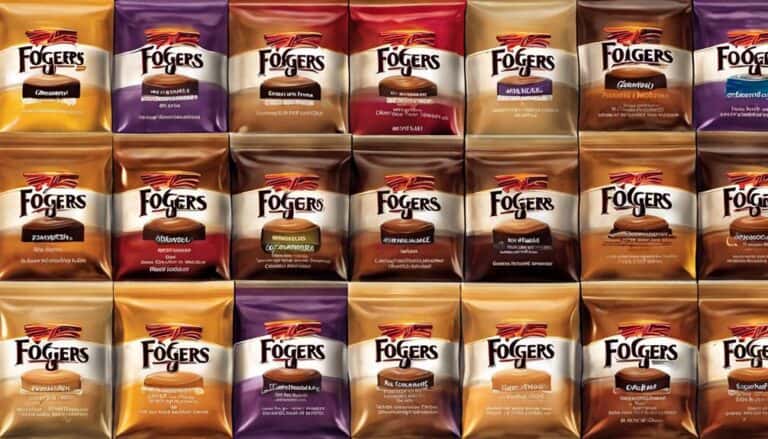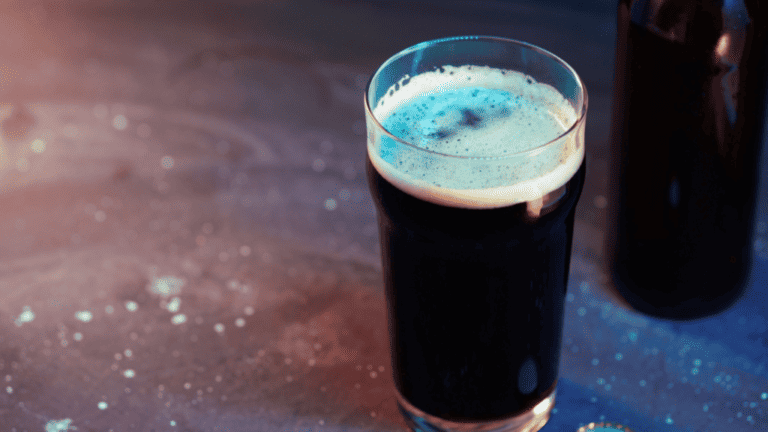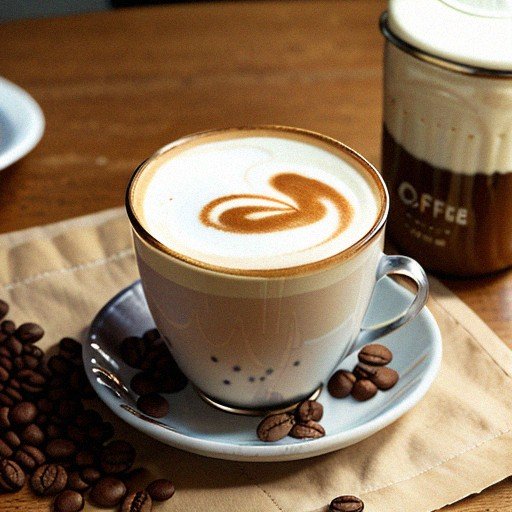Espresso vs Cappuccino: What’s the Difference?

Espresso and cappuccino are two of the most popular coffee beverages in the world. Although they are both made from espresso, they are quite different in many ways. Understanding the differences between these two drinks can help you choose the one that best suits your taste and preferences.
Espresso is a small, concentrated shot of coffee that is made by forcing hot water through finely ground coffee. It has a robust, bitter flavor and is topped with crema, a layer of foam that forms on top of the espresso. Cappuccino, on the other hand, is made by combining equal parts of espresso, steamed milk, and frothed milk. It has a velvety, smooth flavor and is topped with milk foam. The ratio of espresso to milk in a cappuccino is typically 1:1:1, while the ratio of espresso to water in an espresso is usually 1:2.
Understanding the differences between espresso and cappuccino can help you appreciate the art of coffee preparation and composition. From the taste and flavor profiles to the caffeine content and the role of milk, there are many factors that make these two drinks unique. Whether you are a coffee aficionado or a casual drinker, learning about the differences and similarities between espresso and cappuccino can enhance your coffee experience.
Understanding Espresso and Cappuccino
Espresso and cappuccino are two classic Italian drinks that are popular all over the world. Both drinks are made with coffee, but they have distinct differences in preparation, taste, and presentation. In this section, we will explore the characteristics of espresso and cappuccino.
Espresso
Espresso is a concentrated form of coffee that is brewed by forcing hot water through finely ground coffee beans under high pressure. It is a strong, bold, and rich coffee that is usually served in small shots. Espresso is the foundation of many coffee drinks, including lattes, cappuccinos, and Americanos.
Espresso is typically served in small ceramic cups that can hold 1 to 2 ounces of liquid. The crema, a layer of foam on top of the espresso, is an essential part of the drink. The crema should be thick and golden-brown in color, indicating that the espresso was brewed correctly.
Cappuccino
Cappuccino is a popular Italian drink that is made with espresso, steamed milk, and frothed milk. The drink is named after the Capuchin friars, who wore brown hoods that were similar in color to the drink. Cappuccino is typically served in a ceramic cup that can hold 6 to 8 ounces of liquid.
To make a cappuccino, a shot of espresso is brewed and then mixed with steamed milk and frothed milk. The ratio of espresso to milk is usually 1:1:1, but this can vary depending on the desired strength and flavor of the drink. Cappuccinos are often topped with a sprinkle of cocoa powder or cinnamon.
In conclusion, espresso and cappuccino are two classic Italian drinks that have distinct differences in preparation, taste, and presentation. Espresso is a strong, bold, and rich coffee that is usually served in small shots, while cappuccino is a drink made with espresso, steamed milk, and frothed milk. Both drinks are popular all over the world and are enjoyed by coffee lovers everywhere.

The Art of Preparation
When it comes to coffee, preparation is key. The art of preparing a perfect cup of espresso or cappuccino requires skill, knowledge, and attention to detail. In this section, we will discuss the steps involved in preparing both of these popular coffee beverages.
Espresso Preparation
Espresso is a concentrated shot of coffee that is brewed under high pressure. The process involves forcing hot water through finely ground coffee beans using an espresso machine. Here are the steps involved in preparing a shot of espresso:
- Fill the espresso machine with water and turn it on to heat up.
- Grind the coffee beans to a fine consistency.
- Tamp the coffee grounds into a puck using a tamper.
- Place the puck into the portafilter of the espresso machine.
- Lock the portafilter into the espresso machine.
- Start the shot and let it run for 20-30 seconds.
- Stop the shot when the desired volume has been reached.
The result should be a shot of espresso with a layer of crema on top, which is the golden-brown foam that forms on the surface of the shot.
Espresso can be enjoyed as a single shot, double shot, ristretto (a shorter shot with less water), or lungo (a longer shot with more water). The quality of the espresso shot depends on factors such as the quality of the coffee beans, the grind size, and the pressure and temperature of the water.
Cappuccino Preparation
Cappuccino is a popular coffee beverage that combines espresso, steamed milk, and frothed milk. Here are the steps involved in preparing a cappuccino:
- Pull a shot of espresso following the steps outlined above.
- Steam the milk to a temperature of around 150°F using a steam wand.
- Pour the steamed milk into the espresso shot, filling the cup about 2/3 full.
- Using a spoon, scoop the frothed milk on top of the steamed milk, filling the cup to the top.
The result should be a creamy and smooth coffee drink that is often topped with latte art.
The quality of the cappuccino depends on factors such as the quality of the coffee beans, the temperature and texture of the milk, and the barista’s skill in creating the perfect balance between the espresso and milk.
In conclusion, preparing a perfect cup of espresso or cappuccino requires knowledge, skill, and attention to detail. By following the steps outlined above, you can create a delicious coffee beverage that is sure to impress.
Composition and Ratio
Espresso Composition
Espresso is made by forcing hot water through finely ground coffee beans under high pressure. The standard shot size is around 1-2 ounces, and it is typically served in a small cup. Espresso has a strong, bold flavor and a thick, creamy texture.
The composition of espresso is relatively simple, consisting of only two ingredients: water and coffee. The water should be hot, but not boiling, to avoid burning the coffee. The coffee should be finely ground and evenly tamped to ensure consistent extraction.
Cappuccino Composition
Cappuccino is made by combining espresso with steamed milk and milk foam in a specific ratio. The standard ratio is 1/3 espresso, 1/3 steamed milk, and 1/3 milk foam. The size of a cappuccino is typically around 6 ounces, and it is served in a cup with a handle.
The composition of a cappuccino is more complex than espresso, as it involves three different components: espresso, steamed milk, and milk foam. The espresso shot is pulled first, and then the milk is steamed and frothed to create the desired texture. The milk foam is then added to the top of the drink to create a distinctive appearance.
The ratio of the three components in a cappuccino is crucial to achieving the correct flavor and texture. Too much milk or foam can overpower the espresso, while too little can make the drink too strong. The milk should be steamed to the correct temperature to create a smooth, velvety texture, and the foam should be thick and creamy.
In conclusion, understanding the composition and ratio of espresso and cappuccino is essential for creating the perfect cup of coffee. While espresso is a simple drink with only two ingredients, cappuccino is more complex and requires careful attention to the ratio of espresso, steamed milk, and milk foam.
Taste and Flavor Profiles
When it comes to espresso and cappuccino, taste and flavor are the most important factors that differentiate the two drinks. Both drinks are made with espresso, but the way they are prepared and served affects their flavor profiles.
Espresso Flavor
Espresso has a strong and robust flavor that is both bold and intense. It has a rich, full-bodied taste that can be described as slightly bitter with a hint of sweetness. The flavor notes of espresso can vary depending on the type of beans used, the roast level, and the brewing method. However, generally, espresso has a strong, concentrated flavor that is not diluted with milk or other ingredients.
Cappuccino Flavor
Cappuccino, on the other hand, has a milder taste than espresso. It is a combination of espresso and steamed milk, which gives it a creamy and smooth texture. The flavor of cappuccino can be described as a balance between the strong flavor of espresso and the sweetness of milk. The foam on top of the cappuccino adds an extra layer of flavor and aroma, making it a more complex drink than espresso.
Overall, the flavor of cappuccino is less intense than espresso due to the addition of milk. However, the type of milk used can also affect the flavor of the cappuccino. For example, using whole milk can give it a creamier texture and a sweeter taste, while using skim milk can make it lighter and less sweet.
In conclusion, the flavor profiles of espresso and cappuccino are quite different due to the way they are prepared and served. Espresso has a strong and robust flavor, while cappuccino has a milder taste with a creamy and smooth texture. Both drinks have their own unique aroma and aftertaste, making them a favorite among coffee lovers.
Caffeine Content
Espresso and cappuccino are two popular coffee drinks that are enjoyed by millions of people worldwide. One of the main differences between these two drinks is their caffeine content.
Espresso is made by forcing hot water through finely ground coffee beans at high pressure. It is a concentrated coffee that contains a higher amount of caffeine per ounce than other coffee drinks. A single shot of espresso, which is about 1 ounce, contains around 63 milligrams of caffeine. A double shot of espresso, which is about 2 ounces, contains around 125 milligrams of caffeine.
On the other hand, cappuccino is made by combining espresso with steamed milk and milk foam. The amount of caffeine in a cappuccino depends on the amount of espresso used. A standard cappuccino, which is made with a single shot of espresso, contains around 63 milligrams of caffeine. A larger cappuccino, which is made with a double shot of espresso, contains around 125 milligrams of caffeine.
It’s worth noting that the caffeine content of these drinks can vary depending on the type of coffee beans used, the brewing method, and the serving size. Additionally, some coffee shops may add extra shots of espresso to their drinks, which can significantly increase the caffeine content.
It’s important to be mindful of your caffeine intake, as consuming too much caffeine can lead to negative side effects such as jitters, anxiety, and trouble sleeping. The recommended daily intake of caffeine is up to 400 milligrams for most healthy adults.
The Role of Milk
When it comes to espresso and cappuccino, milk plays a crucial role in creating the perfect balance of flavors and textures. The type of milk used can greatly affect the taste, texture, and overall quality of the drink. In this section, we will discuss the different types of milk used in espresso and cappuccino and how they are prepared.
Steamed Milk
Steamed milk is an essential component in both espresso and cappuccino. It is created by heating the milk to a specific temperature and then introducing steam to create a creamy texture. Steamed milk is what gives both drinks their smooth, silky mouthfeel. It also helps to balance out the strong, bold flavor of the espresso.
Whole milk is the most commonly used milk for steaming in espresso and cappuccino. It has a higher fat content than other types of milk, which makes it easier to steam and creates a creamier texture. However, for those who are lactose intolerant or prefer a non-dairy option, there are many milk substitutes available, such as soy or almond milk. These milk substitutes can also be steamed to create a similar texture to whole milk.
Frothed Milk
Frothed milk is another important component in cappuccino. It is created by introducing air into the milk, which creates a frothy texture on top of the steamed milk. The frothy texture is what gives cappuccino its signature look and adds an extra layer of texture to the drink.
To froth milk, a frothing wand or milk frother is used. The wand or frother introduces air into the milk, creating tiny bubbles and a light, airy texture. The frothed milk is then poured on top of the steamed milk and espresso to create the final cappuccino.
While whole milk is the most commonly used milk for frothing, other types of milk can also be used. Cream can be added to the milk to create a richer, creamier texture, while non-dairy milk substitutes can also be frothed to create a similar texture.
Overall, the type of milk used in espresso and cappuccino can greatly affect the taste and texture of the drink. Whether you prefer whole milk, a milk substitute, or a creamier texture, there are many options available to create the perfect espresso or cappuccino.
Other Coffee Beverages
When it comes to coffee drinks, there are a variety of options available beyond just espresso and cappuccino. Here are a few popular coffee beverages that you might want to try:
Latte
A latte is a popular espresso-based drink that is made with steamed milk and a small amount of foam. It typically has a higher ratio of milk to espresso, making it a creamier and sweeter option compared to other espresso drinks. Lattes can be flavored with syrups like vanilla, caramel, or hazelnut to add some extra sweetness and flavor.
Americano
An Americano is a black coffee drink that is made by adding hot water to a shot of espresso. It has a similar strength to drip coffee but with a more intense flavor. Americanos are a great option for those who enjoy the taste of black coffee but want a little extra kick.
Macchiato
A macchiato is an espresso-based drink that is made with a small amount of milk foam. It is similar to a cappuccino but with a higher ratio of espresso to milk. Macchiatos are a great option for those who want a stronger espresso flavor without the added sweetness of a latte.
Mocha
A mocha is a chocolate-flavored espresso drink that is made with steamed milk and chocolate syrup. It has a similar flavor profile to a latte but with the added sweetness of chocolate. Mochas are a great option for those who want a sweet and indulgent coffee drink.
Flat White
A flat white is an espresso-based drink that is made with steamed milk and a small amount of foam. It is similar to a latte but with a higher ratio of espresso to milk and less foam. Flat whites have a stronger espresso flavor compared to lattes and are a great option for those who want a creamy and flavorful coffee drink.
Overall, there are many different coffee beverages to choose from, each with their own unique flavor profile and characteristics. Whether you prefer black coffee, espresso shots, or creamy milk-based drinks, there is a coffee beverage out there for everyone.
Differences and Similarities
Espresso vs Cappuccino Differences
Espresso and cappuccino are two of the most popular coffee drinks in the world. Although they share some similarities, there are also some significant differences between them.
One of the main differences between espresso and cappuccino is the amount of milk used. Espresso is a concentrated shot of coffee made by forcing hot water through finely ground coffee beans at high pressure. It is usually served in a small cup, and it contains very little milk. In contrast, cappuccino is made by combining equal parts espresso, steamed milk, and frothed milk. This means that cappuccino contains much more milk than espresso.
Another difference between espresso and cappuccino is the texture of the milk. In a cappuccino, the milk is steamed and frothed to create a thick layer of foam on top of the drink. In contrast, the milk in an espresso is usually just heated and poured over the shot of coffee. This means that cappuccino has a much creamier texture than espresso.
Espresso vs Cappuccino Similarities
Despite their differences, espresso and cappuccino also share some similarities. For example, both drinks are made using espresso as a base. This means that they both have a strong, intense flavor that is characteristic of espresso.
Another similarity between espresso and cappuccino is that they are both highly customizable. Depending on your preferences, you can adjust the amount of milk, foam, and sweetness in your drink to create a beverage that is perfectly tailored to your individual taste.
Overall, the choice between espresso and cappuccino comes down to personal preference. Some people prefer the strong, intense flavor of espresso, while others enjoy the creamy texture of cappuccino. Ultimately, the decision between these two drinks is a matter of opinion, and it is up to each individual to decide which one they prefer.
Specialty Cappuccinos
Cappuccinos are a classic Italian coffee drink that has been enjoyed for decades. However, over time, different variations of cappuccinos have emerged, each with its own unique taste and texture. The following are some of the most popular specialty cappuccinos.
Dry Cappuccino
A dry cappuccino is a cappuccino that has a higher ratio of espresso to milk, resulting in less milk foam. It is also known as a “scuro” cappuccino, which means “dark” in Italian. The dry cappuccino is perfect for those who prefer a stronger coffee taste and less milk. It is often served with a sprinkle of cocoa powder on top.
Wet Cappuccino
A wet cappuccino, also known as a “chiaro” cappuccino, is the opposite of a dry cappuccino. It has a higher ratio of milk to espresso, resulting in more milk foam. The wet cappuccino has a smoother and creamier texture than a dry cappuccino, making it perfect for those who prefer a milder coffee taste.
Bone Dry Cappuccino
A bone dry cappuccino, also known as a “doppio” cappuccino, is a cappuccino with no milk foam at all. It is made with two shots of espresso and steamed milk. The bone dry cappuccino is perfect for those who want to taste the full flavor of the espresso without any milk foam.
Iced Cappuccino
An iced cappuccino is a refreshing twist on the classic cappuccino. It is made by combining espresso, milk, and ice in a blender. The result is a smooth and creamy drink that is perfect for hot summer days. Some coffee shops also offer flavored iced cappuccinos, such as pumpkin spice, for those who want to try something different.
When it comes to specialty cappuccinos, Starbucks is one of the most popular coffee chains that offer a wide range of cappuccino variations. Their pumpkin spice cappuccino is a seasonal favorite that combines the classic cappuccino with a delicious pumpkin spice flavor.
The Coffee Experience
When it comes to coffee, the experience is just as important as the taste. Espresso and cappuccino are both popular coffee drinks that offer unique experiences for coffee aficionados and lovers alike. In this section, we’ll explore the different aspects of the coffee experience, including latte art and the role of the barista.
Latte Art
One of the most visually appealing aspects of espresso and cappuccino is the latte art that can be created by skilled baristas. Latte art is the technique of pouring steamed milk into espresso to create designs on the surface of the drink. These designs can range from simple hearts or leaves to more intricate designs such as swans or rosettas.
Latte art not only adds to the aesthetic appeal of the drink, but it also requires skill and precision from the barista. It takes practice and patience to perfect the technique, but when done correctly, it can elevate the coffee experience to a whole new level.
The Role of the Barista
The barista plays a crucial role in the coffee experience, especially when it comes to espresso and cappuccino. A skilled barista can create the perfect shot of espresso or perfectly frothed milk for a cappuccino. They can also create latte art and provide recommendations for the best coffee beans to use.
A knowledgeable barista can also help educate coffee lovers about the different aspects of coffee, such as the origin of the beans, the roasting process, and the flavor profiles. They can also provide tips for brewing coffee at home and recommend equipment for the best results.
In conclusion, the coffee experience is about more than just the taste of the drink. Latte art and the role of the barista are important aspects that add to the overall experience. Whether you’re a coffee aficionado or just enjoy a good cup of coffee, the coffee experience is something that can be appreciated by all.
Conclusion
In conclusion, the differences between espresso and cappuccino are quite clear. Espresso is a concentrated shot of coffee that is bold and intense in flavor. It is topped with a layer of crema, which is a creamy foam that forms on top of the espresso shot. On the other hand, cappuccino is made with espresso, steamed milk, and frothed milk. It is a milder and creamier beverage that is topped with milk foam.
When it comes to deciding between espresso and cappuccino, it ultimately comes down to personal preference. If you prefer a strong and bold flavor, then espresso is the way to go. However, if you prefer a milder and creamier flavor, then cappuccino is the better choice.
Both espresso and cappuccino are popular coffee drinks that have their own unique characteristics. Espresso is perfect for those who need a quick pick-me-up, while cappuccino is great for those who want to savor their coffee and enjoy a creamy and frothy beverage.
Overall, whether you prefer espresso or cappuccino, both are great options for coffee lovers. It’s important to experiment with different types of coffee beverages to find the one that suits your taste buds the best.
Frequently Asked Questions
What is the difference between an espresso and a cappuccino?
An espresso is a concentrated shot of coffee made by forcing hot water through finely ground coffee beans using high pressure. A cappuccino, on the other hand, is a coffee drink made with espresso, steamed milk, and frothed milk. The frothed milk is poured on top of the espresso shot, and the steamed milk is added to the drink in equal parts.
Which has more caffeine, espresso or cappuccino?
Espresso has more caffeine per fluid ounce than cappuccino. A single shot of espresso typically contains around 63 milligrams of caffeine, while a cappuccino contains around 40 milligrams of caffeine. However, the total caffeine content in a cappuccino can vary depending on the number of espresso shots used to make the drink.
What are the main ingredients in an espresso and a cappuccino?
The main ingredient in an espresso is finely ground coffee beans. To make an espresso, hot water is forced through the coffee grounds using high pressure. A cappuccino, on the other hand, is made with espresso, steamed milk, and frothed milk. The frothed milk is poured on top of the espresso shot, and the steamed milk is added to the drink in equal parts.
Can you make a cappuccino with an espresso machine?
Yes, you can make a cappuccino with an espresso machine. To make a cappuccino, you will need an espresso machine with a steam wand to steam and froth the milk. Once you have made the espresso shot, you can use the steam wand to heat and froth the milk, and then pour it over the espresso shot.
How does a cappuccino compare to an Americano?
A cappuccino and an Americano are two different coffee drinks. A cappuccino is made with espresso, steamed milk, and frothed milk, while an Americano is made by adding hot water to a shot of espresso. As a result, an Americano is less creamy and has a stronger coffee flavor than a cappuccino.
Are there any health benefits to drinking espresso or cappuccino?
Research suggests that moderate coffee consumption, including espresso and cappuccino, may have health benefits such as reducing the risk of type 2 diabetes, liver disease, and certain types of cancer. However, excessive consumption of caffeine can lead to negative health effects such as anxiety, insomnia, and digestive issues. It is recommended to consume coffee in moderation and consult with a healthcare professional if you have any concerns.





